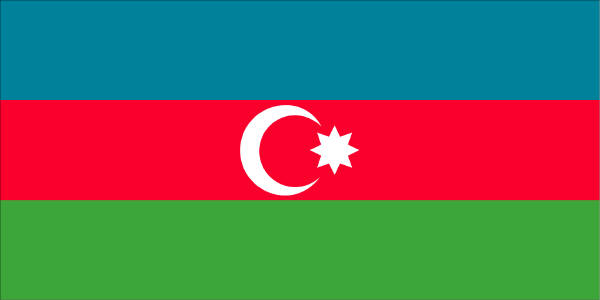Login form
Regional customs and habits
Customs of Argentina
Marriage and Family
 Most couples marry in their 20s, after dating for a number of years. Weddings are usually very elaborate, involving both a civil and a church ceremony, and a large reception with dinner and dancing. Gifts are not brought to the reception but are purchased at and delivered by a gift shop where the couple has registered.
Most couples marry in their 20s, after dating for a number of years. Weddings are usually very elaborate, involving both a civil and a church ceremony, and a large reception with dinner and dancing. Gifts are not brought to the reception but are purchased at and delivered by a gift shop where the couple has registered.
The nuclear family predominates in
Customs of Austria
Marriage and Family
 Couples often decide to live together before or instead of marriage. Many people marry in church, but a civil ceremony must also be performed for a marriage to be legal.
Couples often decide to live together before or instead of marriage. Many people marry in church, but a civil ceremony must also be performed for a marriage to be legal.
In urban areas, families tend to be small, but rural families are often a bit larger. Both parents generally work outside the home, so couples tend to share duties related to the household and children. The government gives families financial allowances for each child. Children who are not in school and whose parents both work are cared for privately or in day-care centers. Most urban Austrians live in apartments, whereas in rural areas people more often live in single-family houses. About one-fifth of all housing is publicly owned.
Customs of Bahrain
Marriage and Family
 Some marriages are arranged, and even those that are not will normally have parental approval; few people marry without family authorization. In the past, women married in their early teens. Now most marry in their late teens or early twenties. A Muslim man is allowed to have four wives if he provides equally for each wife. However, few of the younger generation today consider polygamy a desirable lifestyle.
Some marriages are arranged, and even those that are not will normally have parental approval; few people marry without family authorization. In the past, women married in their early teens. Now most marry in their late teens or early twenties. A Muslim man is allowed to have four wives if he provides equally for each wife. However, few of the younger generation today consider polygamy a desirable lifestyle.
Marriage celebrations usually last for three days, with separate festivities for men and women. On one night, the bride’s hands and feet are decorated with henna, which stays on the skin for days. The bride is also adorned with gold jewelry, including a qobqob (headpiece). The bride’s family pays for the henna day and the groom’s family pays for the other two days.
Customs of Azerbaijan
Marriage and Family
 Azeri living in cities are generally free to choose their marriage partner, but those in rural areas are expected to follow their parents’ wishes. Weddings are celebrated elaborately. A folk-music group usually accompanies the groom and his relatives to the bride’s house in several cars decorated with flowers and ribbons. The party moves inside the bride’s home. The bride is accompanied by friends and relatives, carrying candles and a decorated mirror. A special wedding melody is played as a signal for the bride to say goodbye to her parents and to join the groom. The bride’s parents then give the couple their blessings. The wedding ceremony usually takes place at night.
Azeri living in cities are generally free to choose their marriage partner, but those in rural areas are expected to follow their parents’ wishes. Weddings are celebrated elaborately. A folk-music group usually accompanies the groom and his relatives to the bride’s house in several cars decorated with flowers and ribbons. The party moves inside the bride’s home. The bride is accompanied by friends and relatives, carrying candles and a decorated mirror. A special wedding melody is played as a signal for the bride to say goodbye to her parents and to join the groom. The bride’s parents then give the couple their blessings. The wedding ceremony usually takes place at night.
Customs of Bangladesh
Marriage and Family
 Many women, especially those in rural areas, marry before they are 18. Men marry after they finish their education or have some financial security. Marriage is often arranged through a ghatak, or matchmaker, who can be a relative or family friend. If a man and woman get to know each other on their own, the man sends a formal proposal to the woman’s parents through an older relative. For weddings, both the bride’s house and the groom’s house are decorated with lights. Bamboo gates, decorated with colorful pieces of cloth, are placed at the entrance. The bride wears a sharee, a long piece of printed cloth wrapped around the body, and her jewelry; the groom wears a shirwani (knee-length coat), a pagri (traditional cap), and nagra (flat shoes that curl upward in front). A Muslim groom pledges money for the bride’s future in case the marriage fails; the pledge is recorded in the ka’been (marriage registry). Another common, although illegal, custom in
Many women, especially those in rural areas, marry before they are 18. Men marry after they finish their education or have some financial security. Marriage is often arranged through a ghatak, or matchmaker, who can be a relative or family friend. If a man and woman get to know each other on their own, the man sends a formal proposal to the woman’s parents through an older relative. For weddings, both the bride’s house and the groom’s house are decorated with lights. Bamboo gates, decorated with colorful pieces of cloth, are placed at the entrance. The bride wears a sharee, a long piece of printed cloth wrapped around the body, and her jewelry; the groom wears a shirwani (knee-length coat), a pagri (traditional cap), and nagra (flat shoes that curl upward in front). A Muslim groom pledges money for the bride’s future in case the marriage fails; the pledge is recorded in the ka’been (marriage registry). Another common, although illegal, custom in
